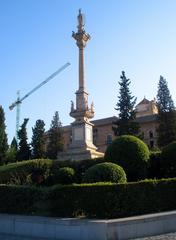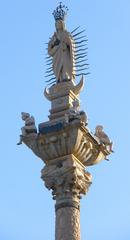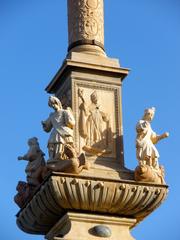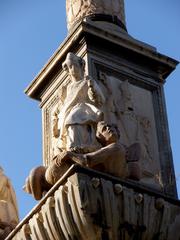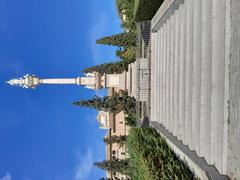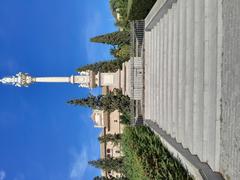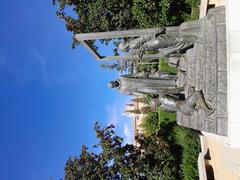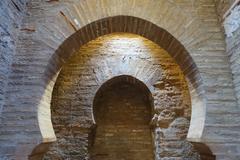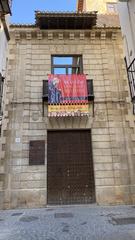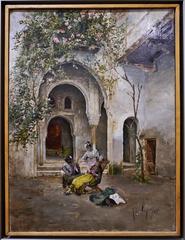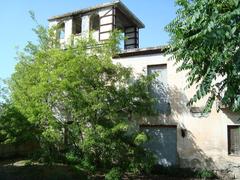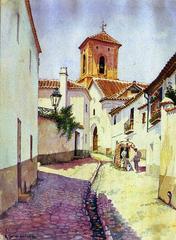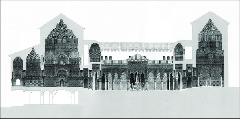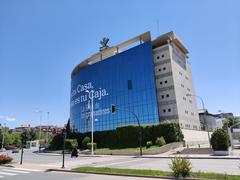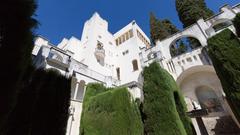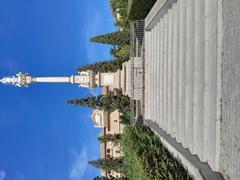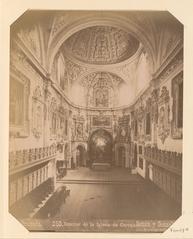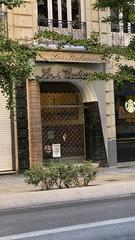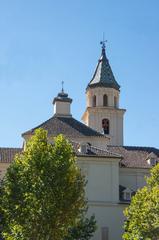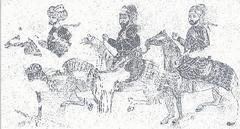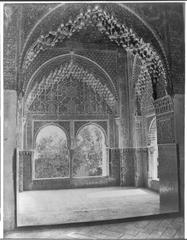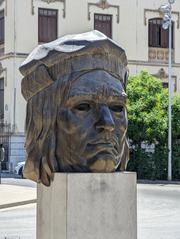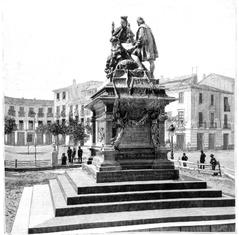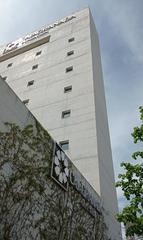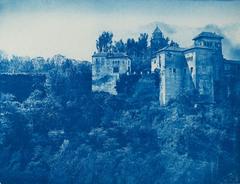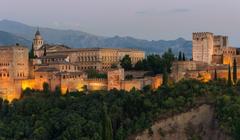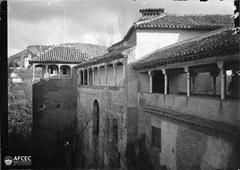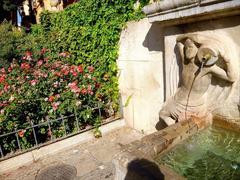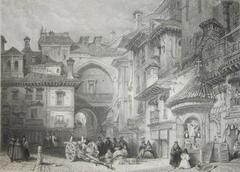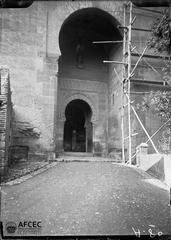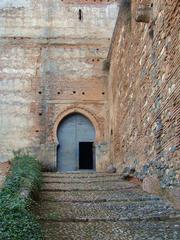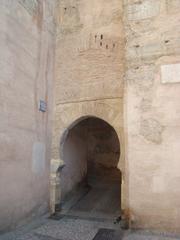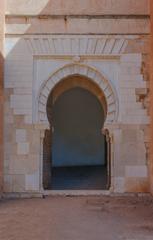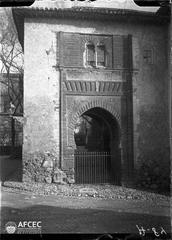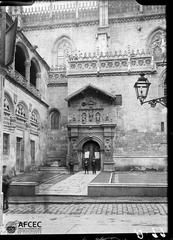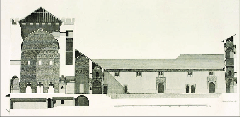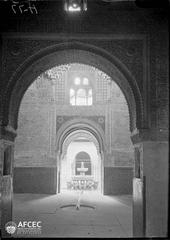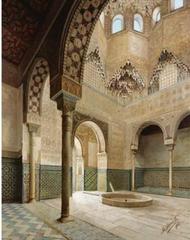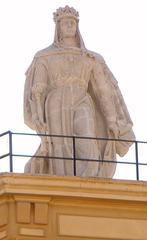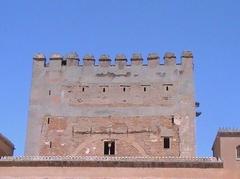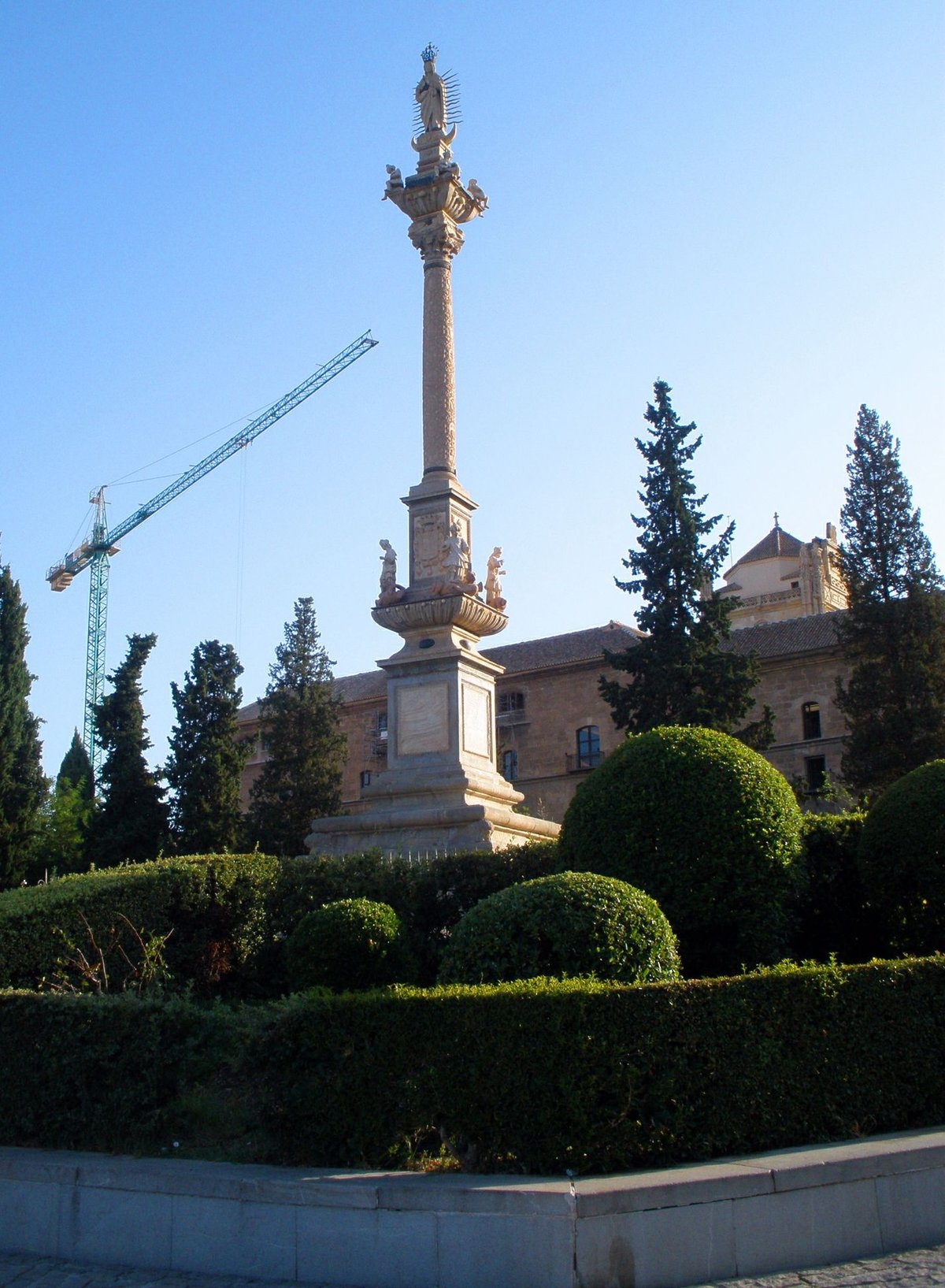
Triumph of the Immaculate Conception Granada: Visiting Hours, Tickets, and Travel Guide
Date: 14/06/2025
Introduction: Granada’s Enduring Marian Heritage
Granada, Spain, is a city where spiritual tradition, art, and history converge. At its heart are two iconic landmarks: the Granada Cathedral and the Triumph of the Immaculate Conception Monument in the Jardín del Triunfo. These sites embody the city’s deep devotion to the doctrine of the Immaculate Conception—a belief that the Virgin Mary was conceived without original sin, a concept central to Spanish Catholic identity. Visiting these landmarks offers more than architectural splendor; it is a journey into Granada’s transformation from its Islamic past to a center of Christian faith and culture.
The Granada Cathedral, a masterpiece of Renaissance and Baroque architecture, stands atop the city’s former mosque and features celebrated works by artists like Alonso Cano and Francisco de Zurbarán. Its main altar and chapels are dedicated to the Virgin Mary, reinforcing its role as a focal point for Marian devotion. Meanwhile, the Triumph of the Immaculate Conception Monument—an elegant 19th-century column crowned by a statue of the Virgin—serves as a public symbol of Granada’s enduring reverence for Mary and the city’s urban development. Both landmarks are accessible year-round, offering guided tours and special events, particularly during the Feast of the Immaculate Conception on December 8th.
This detailed guide covers everything you need to plan your visit: historical background, visiting hours, tickets, accessibility, nearby attractions, cultural events, and practical travel tips. For updated information and immersive tours, consult the official Granada Cathedral website and the Audiala app (Granada Cathedral Guide, Jardín del Triunfo Monument).
Contents
- Introduction
- Historical Context
- Granada’s Religious Transformation
- The Immaculate Conception in Spain
- The Miracle of Empel and Military Patronage
- Triumph of the Immaculate Conception Monument
- Granada Cathedral and Marian Devotion
- Visiting Information
- Nearby Historical Sites and Attractions
- Special Events and Cultural Experiences
- Practical Tips for Tourists
- Frequently Asked Questions (FAQ)
- Conclusion
Granada’s Religious Transformation
Granada’s history is marked by a succession of civilizations—Roman, Islamic, and Christian. After nearly eight centuries of Islamic rule, the city was conquered by the Catholic Monarchs in 1492. The construction of Granada Cathedral atop the former mosque signaled the city’s transformation into a stronghold of Spanish Catholicism and Marian worship, with the Immaculate Conception at its heart.
The Immaculate Conception in Spain
Historical Roots
Spanish devotion to the Immaculate Conception predates its official declaration as dogma in 1854. As early as the 7th century, King Wamba was recognized for defending the doctrine at the Council of Toledo (Catholic News Agency). During the 16th and 17th centuries, Spanish monarchs, theologians, and artists promoted the belief, culminating in King Carlos III establishing Mary as patroness of Spain and its territories in 1761.
The Miracle of Empel and Patronage
A pivotal moment occurred during the Battle of Empel in 1585, when Spanish soldiers, besieged in Holland, discovered an image of the Virgin. Praying for her intercession, they witnessed a miraculous victory, leading to Mary being proclaimed patroness of the Spanish infantry—a tradition still honored today (Catholic News Agency).
Triumph of the Immaculate Conception Monument
Historical Origins and Artistic Features
Located in the Jardín del Triunfo, the Triumph of the Immaculate Conception Monument was erected in the 19th century to celebrate the dogma’s official proclamation. The monument’s neoclassical column, topped by a radiant statue of Mary, draws the eye heavenward, symbolizing her purity and spiritual elevation. Its base is adorned with allegorical figures representing theological virtues and floral motifs such as lilies and roses—traditional Marian symbols. The monument’s artistic style reflects Granada’s blend of local craftsmanship and European neoclassicism (audiala.com, artsandculture.google.com).
The Monument in Civic and Religious Life
Centrally placed in the Jardín del Triunfo, the monument is a focus for both leisure and devotion. It hosts religious processions, especially on December 8th, and remains a gathering point for public ceremonies. The surrounding gardens offer tranquil paths, Mediterranean flora, and seating, making it an accessible and inviting space for all visitors.
Granada Cathedral and Marian Devotion
Artistic Masterpieces
Within Granada Cathedral, the doctrine of the Immaculate Conception is celebrated through remarkable artworks. Alonso Cano’s Inmaculada Concepción de María in the sacristy stands as a focal point for devotion, complemented by other Marian paintings and sculptures by celebrated artists (Tickets Granada Cristiana). The main altar, side chapels, and sacristy all showcase Granada’s artistic response to Marian theology.
Liturgical and Cultural Practices
Granada enjoys the unique privilege of blue vestments for Marian feasts—an exception in the Roman Rite—underscoring the city’s historical advocacy for the doctrine. December 8th, the Feast of the Immaculate Conception, is marked by special Masses, processions, and music, drawing the community together in a vibrant blend of faith and tradition.
Practical Visitor Information
Triumph of the Immaculate Conception Monument
- Location: Jardín del Triunfo, Plaza del Triunfo, Granada
- Opening Hours: Daily from dawn to dusk; open-air, no ticket required
- Accessibility: Wheelchair accessible pathways, though some uneven surfaces exist
- Guided Tours: Included in many city walking tours (nomadicmatt.com)
- Photography: Allowed at all times; best lighting at sunrise and sunset
- Transport: Easily reached on foot or by public transport (bus lines 8, 21, 33, C31, C32, C34)
Granada Cathedral
- Location: Center of Granada, near Royal Chapel
- Opening Hours: Monday–Saturday 10:00 AM–6:30 PM; Sundays 2:00 PM–6:30 PM (check for holiday variations)
- Tickets: Approx. €7 for adults; discounts for students/seniors; children under 12 free (Granada Cathedral website)
- Accessibility: Ramps, elevators, and assistance upon request
- Guided Tours: Available in multiple languages, including audio guides
- Dress Code: Modest attire recommended
Nearby Historical Sites
- Royal Chapel of Granada: Tombs of Ferdinand and Isabella, Gothic art (Royal Chapel)
- Alhambra & Generalife: Moorish palaces, gardens, UNESCO site (HeyGranada)
- Albaicín: Historic Moorish quarter, panoramic city views (España Guide)
- Carrera del Darro: Picturesque riverside walk
- Cartuja Monastery: Noted for its Baroque art and tranquil cloisters
Special Events and Cultural Experiences
The Feast of the Immaculate Conception on December 8th is an annual highlight, with processions, music, and festive gatherings at both the cathedral and the monument. Local artists, musicians, and residents participate, making it an exceptional time for cultural immersion (Time and Date: Immaculate Conception).
Practical Tips for Tourists
- Best Time to Visit: December 8th for celebrations; spring and autumn for pleasant weather
- Tickets and Tours: Book in advance for cathedral and Alhambra
- Accessibility: Most major sites are accessible; Albaicín has steep, cobbled streets
- Facilities: Cafés, restrooms, and seating available near main attractions
- Guided Tours: Enhance understanding and context—available in multiple languages
Frequently Asked Questions (FAQ)
Q: Are tickets needed for the Triumph of the Immaculate Conception Monument?
A: No; it is a public outdoor monument, open and free to visit year-round.
Q: What are the visiting hours for the cathedral?
A: Monday–Saturday 10:00 AM–6:30 PM; Sundays 2:00 PM–6:30 PM. Check the official site for holiday hours.
Q: Are guided tours available?
A: Yes, both guided and audio tours are available for the cathedral; many city tours include the monument.
Q: Is the cathedral wheelchair accessible?
A: Yes, with ramps and elevators.
Q: Can I take photos inside?
A: Non-flash photography is generally permitted; respect posted signs.
Conclusion
The Triumph of the Immaculate Conception—expressed in both monument and cathedral—offers a unique window into Granada’s spiritual, artistic, and civic identity. These sites not only celebrate centuries of Marian devotion but also invite visitors to engage with Granada’s layered history and vibrant present. Whether you are drawn by art, history, or faith, Granada’s Triumph of the Immaculate Conception is a journey worth making.
Plan your visit using official resources like the Granada Cathedral website, Audiala app, and local tourism platforms. Embrace the opportunity to witness living traditions and immerse yourself in a heritage that continues to inspire.
References
- Granada Cathedral website
- Jardín del Triunfo Monument – Audiala
- Granada Cathedral Guide – Tickets Granada Cristiana
- HeyGranada: Most Important Monuments in Granada
- Catholic News Agency: The Miracle of Empel
- Arts & Culture: Spanish Religious Art
- Nomadic Matt: Granada Travel Guide
- Visit Southern Spain: Where to Stay in Granada
- Royal Chapel of Granada
- España Guide: Things to Do in Granada
- Time and Date: Immaculate Conception
